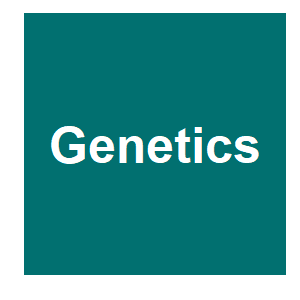Transmission distortion and genetic incompatibilities between alleles in a multigenerational mouse advanced intercross line

|
D. Arends, S. Kärst, S. Heise, P. Korkuc, D. Hesse and G. A. Brockmann,
Genetics,
2021.

While direct additive and dominance effects on complex traits have been mapped repeatedly, additional genetic factors contributing to the heterogeneity of complex traits have been scarcely investigated. To assess genetic background effects, we investigated transmission ratio distortions (TRDs) of alleles from parent to offspring using an advanced intercross line (AIL) of an initial cross between the mouse inbred strains C57BL/6NCrl (B6N) and BFMI860-12 (BFMI). 341 males of generation 28 and their respective 61 parents and 66 grandparents were genotyped using Mega Mouse Universal Genotyping Arrays (MegaMUGA). TRDs were investigated using allele transmission asymmetry tests, and pathway overrepresentation analysis was performed. Sequencing data was used to test for overrepresentation of non-synonymous SNPs in TRD regions. Genetic incompatibilities were tested using the Bateson-Dobzhansky-Muller two-locus model. 62 TRD regions were detected, many in close proximity to the telocentric centromere. TRD regions contained 44.5% more non-synonymous SNPs than randomly selected regions (182 vs. 125.9 ± 17.0, P < 1×10-4). Testing for genetic incompatibilities between TRD regions identified 29 genome-wide significant incompatibilities between TRD regions (P(BF) < 0.05). Pathway overrepresentation analysis of genes in TRD regions showed that DNA methylation, epigenetic regulation of RNA, and meiotic/meiosis regulation pathways were affected independent of the parental origin of the TRD. Paternal BFMI TRD regions showed overrepresentation in the small interfering RNA (siRNA) biogenesis and in the metabolism of lipids and lipoproteins. Maternal B6N TRD regions harbored genes involved in meiotic recombination, cell death, and apoptosis pathways. The analysis of genes in TRD regions suggests the potential distortion of protein-protein interactions influencing obesity and diabetic retinopathy as a result of disadvantageous combinations of allelic variants in Aass, Pgx6 and Nme8. Using an AIL significantly improves the resolution at which we can investigate TRD. Our analysis implicates distortion of protein-protein interactions as well as meiotic drive as the underlying mechanisms leading to the observed TRD in our AIL. Furthermore, genes with large amounts of non-synonymous SNPs located in TRD regions are more likely to be involved in pathways that are related to the phenotypic differences between the parental strains. Genes in these TRD regions provide new targets for investigating genetic adaptation, protein-protein interactions, and determinants of complex traits such as obesity. More related to this: Standard deviations: The biological bases of transmission ratio distortion Sperm competition suppresses gene drive among experimentally evolving populations of house mice Transmission ratio distortion: review of concept and implications for genetic association studies
|



